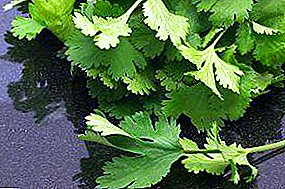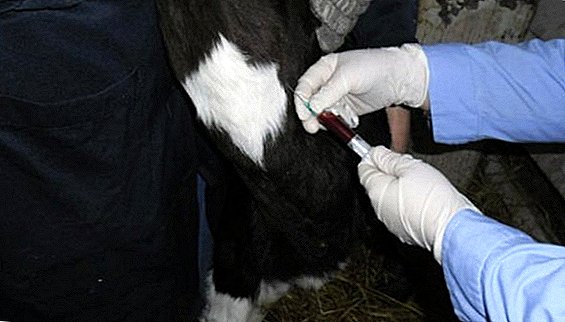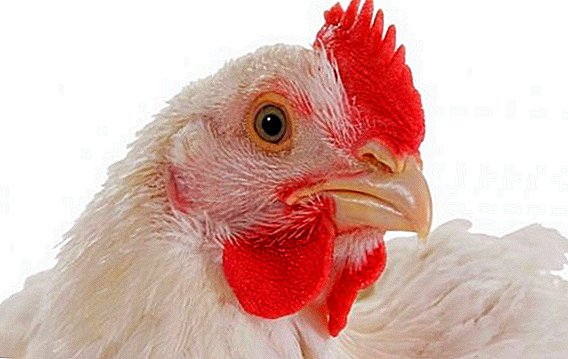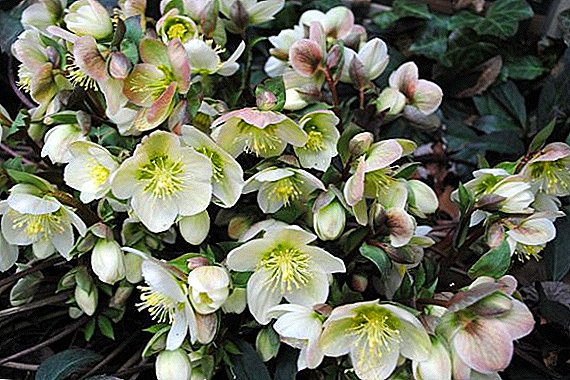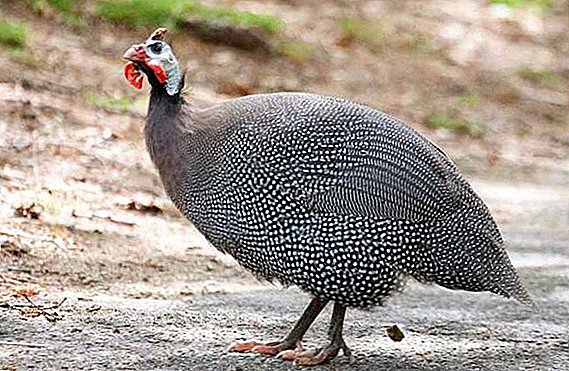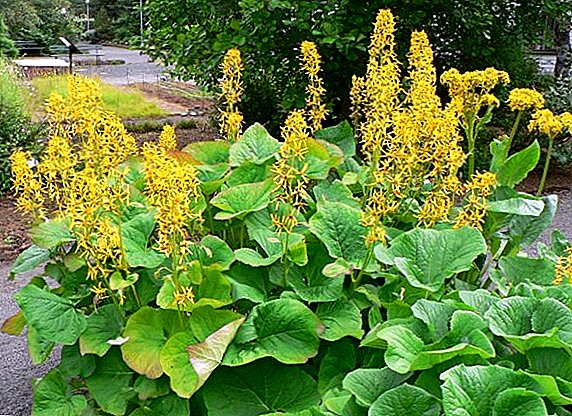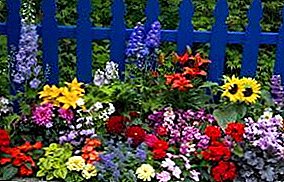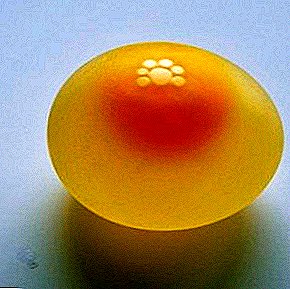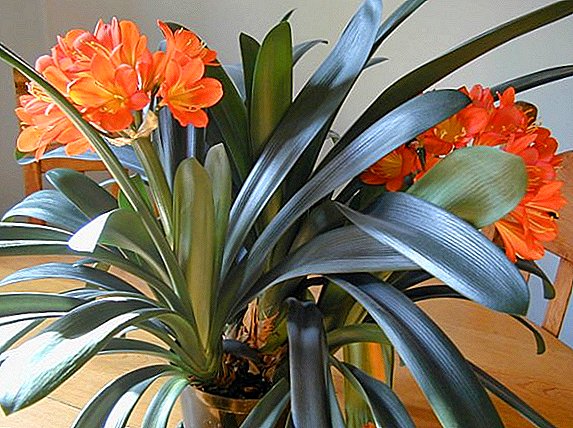 Clivia, or Kaffir Lily belongs to the Amaryllis family. This perennial flower in the wild is found on the territory of South Africa, and today only three species of this plant are known.
Clivia, or Kaffir Lily belongs to the Amaryllis family. This perennial flower in the wild is found on the territory of South Africa, and today only three species of this plant are known.
Due to its decorative qualities, unpretentiousness and ease of care, clivia is very popular in gardening. This beauty attracts with its appearance both during flowering and during its absence. If you decide to grow houseplant, caring for it will be a real pleasure.
Popular types of clivia in home floriculture
Clivia is a unique flower that combines the brightness of bell-shaped flowers and the richness of dark green leaves that grow at an angle of 180 °, forming a kind of pyramid. It grows clivia leaves slowly (5-10 pieces over the summer), but does not shed them for a long time.
Clivia blooms for about a month, loosening the buds in turn, which makes it seem that the plant blooms for a long time.
The decorative form is a stunted plant, while wild flowers reach gigantic proportions. Not all forms of clivia are suitable for growing a house, only certain species will harmoniously fit into the interior of the room. 
Did you know? Clivia protects people born under the sign of Sagittarius. It helps to keep cheerfulness and protects against negativity.
Clivia Gardena
The Latin name is Clivia Gardenii. It grows up to half a meter in height, has leathery, belt-shaped, dark green leaves, pointed at the ends. It blooms in the second half of winter with red bells, gathered in an umbrella inflorescence. Pedicle reaches a height of 50 cm.
Cinnabar clivia
The most common type of decorative clivia. The second name of this flower is Miniat Clivia, in Latin Clivia Miniata. While the flower is at rest, it is impossible to distinguish it from the beautiful clivia - its leaves also have a belt-like shape, a dark green color and a length of 70 cm.
The difference is noticeable when Clivia cinnabar blooms - its flowers are red-orange, the petals are yellowish at the base. This species blooms in February and May and forms up to 20 flowers on the peduncle. It was the cinnabar clivia that became the basis for the development of new varieties of this beautiful plant. 
Clivia is beautiful
The Latin name is Clívia Nobilis. It has the same belt-like leaves, only their length is slightly shorter - 40 cm.When flowering, throws out a half-meter flower spike with long, funnel-shaped flowers of a light red shade, collected from 30-60 pieces in inflorescence. Petals clivia beautiful prozelenie differ at the tips. Flowering time - the second half of winter.
Optimal conditions for growing Kaffir lily in the house
In addition to the luxurious flowering and unpretentiousness, its longevity can be attributed to the advantages of clivia. If you know all about clivia and competently care for this southerner, then you can admire it for more than a decade.
Location and lighting
First you need to remember Clivia likes bright diffused light and suffers from direct sunlight.
Western and eastern windows are best suited. If you place a flower on the south side, you should take care of its shading. It is also not recommended to place the climate on the north side - it will grow slower and may not bloom at all. 
In the summer, it is advisable to expose the room clienia to fresh air: on the terrace or balcony, but do not forget about sun protection.
Important! During the flowering and development of buds, neither transplanting a cleavia nor moving a pot with it is impossible — the plant will begin to shed its leaves. If the bush has been rearranged, you need to place it to the light by the same side as in the same place.
Temperature conditions
If you are thinking about how to make the bloom blossom at home, create the right temperature for it. During the period of growth it should be + 20-25 ° C, and from autumn to spring - + 12-14 ° C. When the temperature drops, the plant goes into a dormant period and lays buds for the next season.
As soon as the first peduncle appears, the temperature should be raised to + 18-20 ° C.
Important! The larger and older the plant, the rest period it should be longer.
Features care for the bloom in the flowering period
If you decide to grow this flower in your home, remember that Clivia needs special soil, consisting of sheet, sod land and sand, the rest of the care at home is the correct feeding and watering. It is desirable that there is good drainage, which can be used as ordinary sea pebbles. 
Watering and moisture
Clivia is not particularly demanding on the humidity of the air, however, low humidity in the winter and lack of lighting leads to the fact that the plant quickly fade.
Spraying should be carried out for hygienic purposes, rather than to increase the humidity. Dust on the leaves can be cleaned with a damp cloth.
Clivia needs moderate watering - with an excess of moisture, the roots begin to rot, and the trunk and leaves - to grow brown. For irrigation it is necessary to use separated, not hard water. Watering is necessary after drying the surface layer of soil, and the excess water from the pan must be poured.
When the plant has released a spike and until the flowers are fully blooming, the frequency of watering is increased. After the clivia blooms, watering is reduced. During dormancy, the flower practically does not need watering - once or twice a month is enough to keep the leaves from drying out.
In winter, you need to monitor the state of the leaves - the color and vitality. If you notice a change, carefully inspect the plant to find out why the tips of clivia leaves turn yellow. If you do not notice the pests, just moisten the soil. 
Did you know? In the homeland, cleavia is used to treat snake bites.
When and how to feed
From the first year of life, from spring to August, it is advisable to fertilize the clique. To do this, use organic or complete mineral supplements twice a month. It is advisable to alternate fertilizer. During the rest period, it is not necessary to feed the clique.
If you decide to use ready-made fertilizers, then you need to choose for bulbous and flowering plants. At the same time, florists recommend reducing the concentration indicated in the instructions.
Complex fertilizers are added to water for irrigation.
Features care in a dormant period
Experienced florists are advised to arrange a rest period for the home clivia - wintering. There are at the same time certain rules for the care of blooming after flowering.
At the beginning of autumn it is advisable to put the pot with the plant in a cool room, the temperature of which will be 7-12 ° C. With the onset of cold weather, he is returned to the room where he will spend the winter.
For young plants enough two months of rest. For adults, the rest period should last longer — until March, when the flower arrow begins to grow.  It is practically not necessary to water and feed the clea in the dormant period. Lily signals a lack of moisture by dropping leaves.
It is practically not necessary to water and feed the clea in the dormant period. Lily signals a lack of moisture by dropping leaves.
Important! Feeding during the rest period will exhaust all clivia forces, and it can even die.
After a proper winter, the lily blooms longer and richer.
Clivia Transplant Subtleties
Young clives are in need of an annual transplant, as they are rapidly increasing in size. Adult plants need to be transplanted in the case when the roots do not fit in the pot - usually every 2-3 years. Transplantation is done after clivia has faded.
Although Clivia is patient even with adverse conditions, transplanting is stressful for her. Therefore, you need to carefully follow the rules of transplantation of this plant.
Soil for clivia should be slightly acid, loose and not uniform. The optimal proportion:
- turf - 2 parts;
- peat - 1 part;
- humus - 1 part.

A clivia pot should be small in size - the roots should fit tightly in it. To ensure proper ventilation and drainage in the pot, there must be drainage holes.
The size of the pot for each subsequent transplant should be 2-4 cm over the previous one.
Important! If the blade is planted in a spacious pot, it will bloom sluggishly or does not bloom at all.
To prevent stagnation of water, drainage should be placed on the bottom of the pot, and the root neck should be protruded to the surface during transplantation (to prevent leaves from rotting).
Often, when transplanting, the roots of clivia are damaged, so the places of the crest need to be sprinkled with activated carbon powder or ashes, and watering immediately after the transplant cannot be done in this case, since the root system will begin to rot.
Very large flowers are no longer transplanted, they annually refresh the upper layer.
Clivia breeding at home
Like many lilies, clivia propagates in seed and vegetative ways.
Clivia of seeds
Not the most common method of reproduction of households at home, because it is not very effective. However, many gardeners successfully use it. 
To get the seeds, the blooming cleavia is pollinated using the cross method. If pollination is successful, a green ovary will appear. After ripening, the berry becomes reddish and becomes soft.
Kaffir lily seed is grown from October to April. Seeds are planted in a container with a nutrient substrate (peat, sand, turf) at a distance of 2 cm from each other. Sprouts will appear only after six months.
After the seedlings grow up and begin to produce leaves, they are transplanted into small (7 cm in diameter) separate containers. Subsequent transplantation is performed as clivia grows. The first two years the pots for transplanting should be 3 cm larger than the previous ones. You can add to the substrate part of the humus.
After two years, starting in autumn, the flower must be provided with a dormant period, since clivia begins to bloom in the third or fourth year of life.
Vegetative method
The most optimal method of growing clivia is reproduction by children. They are separated from the mother plant at the time when they have 4-5 leaves. Given the fragility of the roots, any damage should be avoided.

Important! In no case can not be separated sprouts during flowering.
For young shoots, the container is chosen to be no larger than 7 cm in diameter. When a young flower adapts and gets stronger, it can be transplanted into the ground for clivia. Flowering plant will begin in 2-3 years.
Possible problems when growing clivia
As a result of improper care for clevia problems may arise. In order for the flower to delight its beauty longer, we describe the main signs of erroneous care, the causes and ways to troubleshoot problems.
Most often clivia suffers from an excess of moisture, with the result that it rots the root system and there are painful symptoms. With insufficient watering, the flower spike may be too short.
Clivia does not bloom
If the time for the Kaffir lily to bloom has come, but it does not bloom, then the rest period was short for her. In this case, it is necessary to provide the plant with a full-fledged period of rest, placing it in a cool room.
Clivia ceases to bloom and under high temperature or low light. They simply struggle with this problem - a temperature regime necessary for the season is created and diffused light is provided.
Another reason for the lack of flowering can be an excess of nitrogen. In this case, nitrogen fertilizers are excluded, and potash or organic fertilizers are used instead. 
Did you know? Clivia was named after the Duchess of Northumberland Charlotte Clive.
Dry leaves
If clivia leaves dry, this can be a sign of waterlogging or stagnant water. In order to save the plant, you need to change the substrate and place the flower there, after cutting off the rotten roots and disinfecting the sections.
Yellow leaves
Clivia may react with yellowing leaves to transplant. To remedy the situation, it is necessary to water the plant with the addition of a few drops of root growth stimulant (for example, "Kornevin").
Insufficient watering can also affect the color of the leaves. In this case, it is necessary to adhere to the irrigation regime and ensure that the earthen ball does not dry out.
Another reason why leaves of clivia may turn yellow is lack of nutrition. Everything is simple - the feeding mode must be respected.
Fight against diseases and pests
With proper care, Clivia is practically not susceptible to diseases, but sometimes it still attacks ailments. 
The most common disease of clivia is gray rot. To provoke its appearance can too spacious pot. Manifested rot brown spots on the leaves. Cure can be transplanted into a new pot with disinfected soil, after removing the affected roots and treating them with activated carbon powder.
When a mealybug appears, clivia leaves are wiped with a cotton swab or a cloth moistened with alcohol or a soap and tobacco solution.
Pests can also attack cleavia, the most dangerous of which are considered:
- shield;
- mealybug;
- spider mite;
- aphid
As you can see, it is not difficult to care for the cleavia. However, a number of nuances need to be taken into account so that the cultivation of this beauty gives you maximum pleasure.


